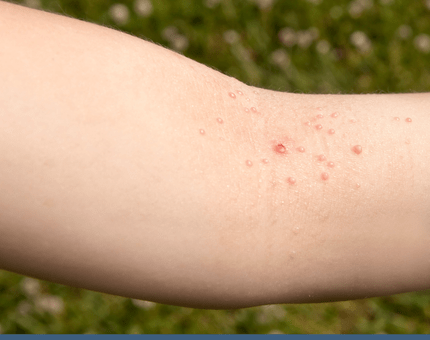What Is Molluscum Contagiosum? The Summer Skin Rash Every Parent Should Know

As summer heats up and kids jump into pools, a tiny skin rash often tags along — molluscum contagiosum. It’s a common viral skin infection, especially in children, and it spreads surprisingly easily through touch, towels, and even water.
Here’s what you need to know to identify, treat, and prevent this stubborn little skin visitor.
What Does Molluscum Contagiosum Look Like?
Molluscum contagiosum appears as:
- Small, dome-shaped bumps (usually skin-colored or pink)
- A central dimple (called umbilication) — think of a mini belly button
- Often grouped together and follow a rubbing pattern (like along folds of the skin or where clothes rub)
These bumps are caused by the molluscum contagiosum virus (MCV), a member of the poxvirus family. It’s not dangerous, but it’s highly contagious.
How Do You Catch Molluscum?
Molluscum spreads through:
- Skin-to-skin contact (common in kids during play)
- Contaminated surfaces (like gym mats, towels, or bath toys)
- Shared water (such as in swimming pools or hot tubs)
Children with eczema or sensitive skin may be more prone to outbreaks, and their rashes may last longer or be more widespread due to a compromised skin barrier.
How Long Does Molluscum Last?
While molluscum will eventually go away on its own, it’s not quick:
- Each bump can last weeks to months
- The full virus cycle may take 6 months to 2 years to fully clear
Once bumps flatten or crust, the virus is typically gone and no longer contagious.
Should You Treat Molluscum?
It’s up to you. Some families choose to let it run its course, especially if the bumps aren’t bothersome. But for faster resolution or to prevent spread, treatment is an option.
Common molluscum treatments include:
- Cryotherapy (freezing)
- Curettage (scraping)
- Topical creams or solutions (prescription treatments that target viral cells)
These treatments target the viral core inside the bump — think of it like removing the seed from a fruit to stop it from growing.
How Can You Prevent Molluscum?
Good hygiene goes a long way:
- Wash hands regularly
- Avoid sharing towels, razors, and clothing
- Cover active bumps with clothing or bandages
- Keep kids out of communal water (like pools) if lesions are not covered
Final Thoughts
Molluscum contagiosum is harmless but persistent, and while it often clears on its own, treatment can speed recovery and reduce spread. If you’re unsure whether your child’s rash is molluscum — or if it’s not improving — a visit to your dermatologist can help clarify the diagnosis and treatment plan.
At Tareen Dermatology, we offer safe, effective treatment options for molluscum — and we’re happy to guide you through what’s best for your child or yourself.